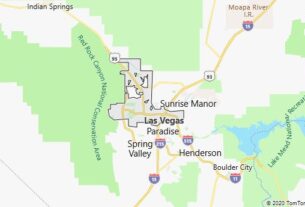Population. – At the 1980 census the population of Mexico was 66,846,833 residents, Rising to 81,140,922 residents at the last census of 1990, corresponding to an average density of 41 residents / km 2. The demographic increase is high (1.6% per year in 1985-90) but tends to decrease, albeit slowly, together with the birth rate (31.5ı in 1990 against 35.8ı in 1978); the mortality rate remains low (5.3ı in 1990), and this can be explained considering that the population is made up mainly of young classes (about half are under the age of 18). The demographic increase is regionally differentiated, since considerable internal migrations have been added to the natural movement of the population, which are directed above all towards urban areas and in newly developed localities, such as those bordering the United States. With this country, in fact, intense seasonal and daily movements take place, as employment opportunities in the US are considerably higher and the border is also crossed by a large number of illegal immigrants. Natural movement and migratory flows determine a continuous increase in demographic concentration: the most densely populated regions are also those in which the growth rate is greater. A totally exceptional case is represented by the capital, Mexico City, which with its 13.6 million residents it represents the largest urbanized area in the world. Mexico City, which with its 13.6 million residents it represents the largest urbanized area in the world. Mexico City, which with its 13.6 million residents it represents the largest urbanized area in the world.
According to rrrjewelry, through the uncontrolled illegal settlement, the immense periphery of the capital is occupying the great valley at the center of which the city was born, forming an undifferentiated conurbation where hygienic and environmental problems are aggravated. It is estimated that about 100 km 2 of agricultural space are urbanized annually. The high rate of both air and water pollution in Mexico City is mainly attributable to the high industrial settlement located inside and outside the metropolitan area (steel, mechanical, automotive and chemical industries with a production that is about half of that of the whole country) and urban traffic (it is estimated that more than 3 million vehicles circulate in the capital every day).
In Mexico we are working to reduce the number of illiterate people, which has always been a problem in the social reality and which has not negligible economic implications. In 1990 the number of illiterates was 12.7% of the adult population (10.5% men, 14.9% women), but in 1960 it still exceeded 30%.
Economic conditions. – Since the mid-1970s, the growth of the Mexican economy has been almost exclusively linked to the expansion of oil extraction and processing activities: Mexico, which is the largest producer of crude oil in Latin America, during the 1980s, with a production fluctuating around 130 million tons per year, it was the fourth largest producer in the world (in some periods this position was disputed by China). In 1992 the proven reserves were higher than 7 billion tons which, at the current rate of exploitation of the fields, ensure the country about 50 years of oil production. Two-thirds of exported goods are made up of oil, mainly directed to the United States, which thus plays a key role in the country’s economy. per capita just under 3,000 dollars (1991; Italy 18,500, USA 22,500): between 1980 and 1991, GNP increased on average – in real terms – by 1.5% (Italy 2.4%; USA 3.1 %). The imbalance caused by the excessive weight of oil has however created serious difficulties: to finance development and due to the growth in domestic consumption, Mexico has borrowed abroad (for 80% to private banks and public agencies of the United States), when the growth of the oil industry secured these loans. Debt has become a heavy burden since 1982, when oil prices fell: around a million jobs were lost in that year alone. It is estimated that unemployed and underemployed are over 50% of the active population (1989). L’ inflation rose significantly in the 1980s, even exceeding 50% per annum. Due to the difficulties connected with the repayment of the loans obtained, Mexico is forced to periodically renegotiate his foreign debt: it is estimated that in 1987 94.7% of exports were used to repay loans or pay interest on the foreign debt, which it amounted to just under US $ 100 billion in 1992. The state oil industry, PEMEX, is the largest company in the country, employing around 100,000 people. The drop in oil prices in early 1986 reduced its export earnings by 58%. Along with petrochemicals, despite the recent slowdown in the pace of growth, the oil sector remains the driving force of the Mexican economy. dragging industrial production. This, which had risen by 8% between 1977 and 1980, decreased in the following years, to return to record further increases between 1984 and 1990 (annual average 1980-90 p1%). PEMEX is planning a significant expansion of basic petrochemicals to be completed in the early 1990s; the Mexican energy plan envisages maintaining energy self-sufficiency until the year 2000.
Mexico continues to be a predominantly agricultural country, considering that a fifth of the workforce is employed in agriculture, compared to 50% in 1965. The primary sector participated with 12% in the formation of the gross domestic product in 1970, but only with 9% in 1990. Production has steadily increased in recent decades, both due to the cultivation of new lands and the greater diffusion of irrigation and mechanization, so much so that agricultural-food production has grown more rapidly than demographic increase reaching greater availability per capita. Between 1960 and 1990, 5-6 million hectares previously unused were cultivated. However, the food problem, which is largely characterized by malnutrition (protein deficiencies), still remains serious today especially in urban suburbs such as in Mexico City where, due to the high incidence of unemployment and underemployment, a high part of the population is on the verge of survival. In the agricultural sector, subsistence production is still widespread, with parceled ownership able to exchange only a modest amount of products.
As far as production is concerned, corn holds the absolute primacy (135 million q in 1991), which together with wheat (41 million q), beans (15 million q) and rice (3.5 million q) constitutes the food base of the majority of the population. Meat consumption is still modest, and large farmers prefer US markets, considering the poor purchasing capacity of the population. Over the last twenty years, agricultural production aimed at processing and export has also grown considerably, in some cases it has doubled as for sugar cane or coffee (3 million q in 1991), which is in the lead. to exports of the sector. Fishing remains stable (1.4 million tonnes of catch in 1991),
The industrial structure of modern Mexico developed as a result of investments by foreign capital and international credits. Alongside the production of oil and natural gas, concentrated in the Gulf of Mexico, where it is also extracted from the submarine platform, the extraction of 40 different minerals has increased (on average by 3% per year between 1970 and 1980).. Mexico has the primacy in the production of silver, the export of which has grown considerably after the opening of the largest silver mine in the world in Real de Angeles in the state of Zacatecas: the production has increased from 1550 t in 1982 to 2346 t in 1990. Furthermore, Mexico is among the major producers of antimony, cadmium, mercury and zinc. The first phosphate mine went into production in the early 1980s, and in the same period uranium mining began at Los Amoles in the state of Sonora. The industrial production system is now very complex: after the nationalization of the 1950s, which mainly affected the mining sector and the production of electricity, investments, including foreign ones, have been directed towards chemicals, plant engineering, and motor factories. and electrical machinery, with factories concentrated in the central belt (Mexico City) and in the northern areas. Since the 1970s, an industrialization program has been launched in the border area with the United States with the creation of which mainly concerned the mining sector and the production of electricity, investments, including foreign ones, were directed towards chemicals, plant engineering, motor and electrical machinery factories, with factories concentrated in the central belt (Mexico City) and in the northern areas. Since the 1970s, an industrialization program has been launched in the border area with the United States with the creation of which mainly concerned the mining sector and the production of electricity, investments, including foreign ones, were directed towards chemicals, plant engineering, motor and electrical machinery factories, with factories concentrated in the central belt (Mexico City) and in the northern areas. Since the 1970s, an industrialization program has been launched in the border area with the United States with the creation of maquiladoras, manufacturing industries that process semi-finished products from the United States, where the production that is competitive for tax relief and low labor costs is then exported. This type of business has recently spread to areas far from the border. Tourism, a growing sector with a strong participation of US and Japanese capital, represents a major activity of the economy, with revenues second only to those coming from the export of oil. In 1990, 6.6 million visitors, over 88% of whom came from the United States and Canada, entered Mexico.


